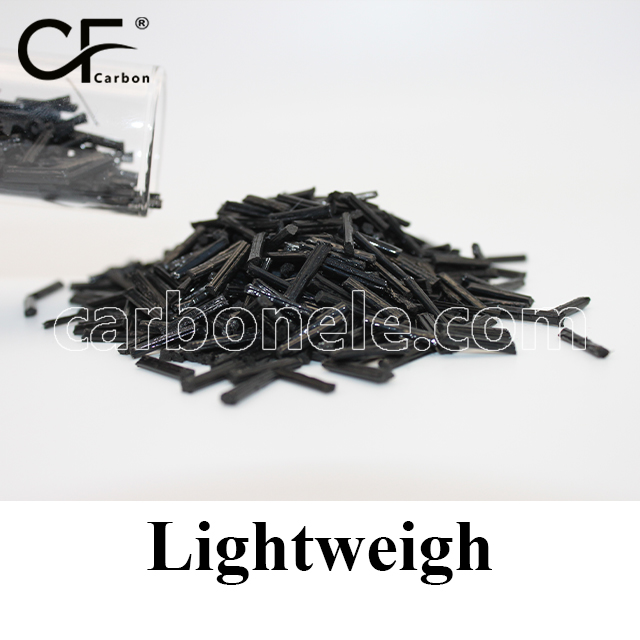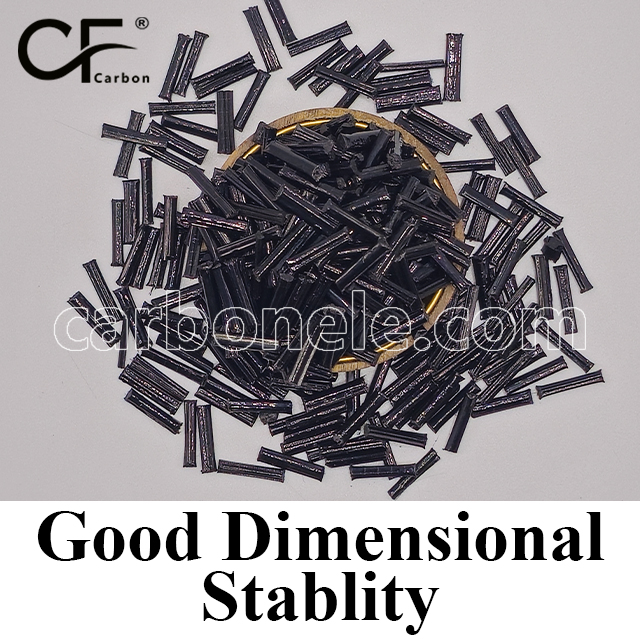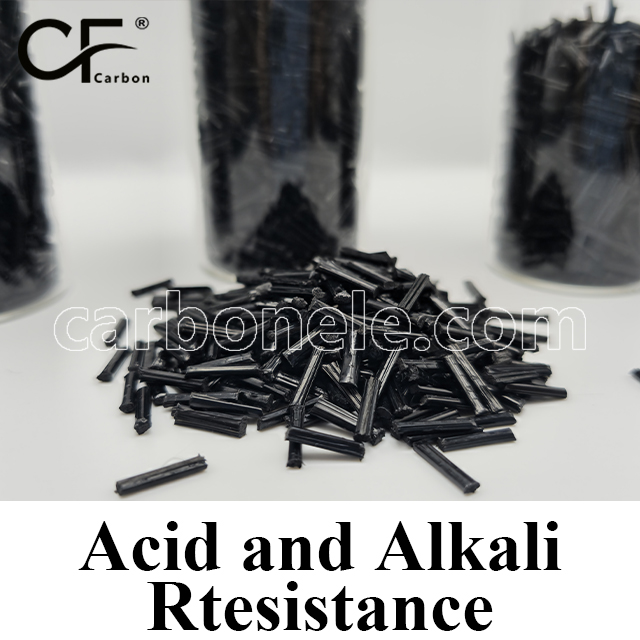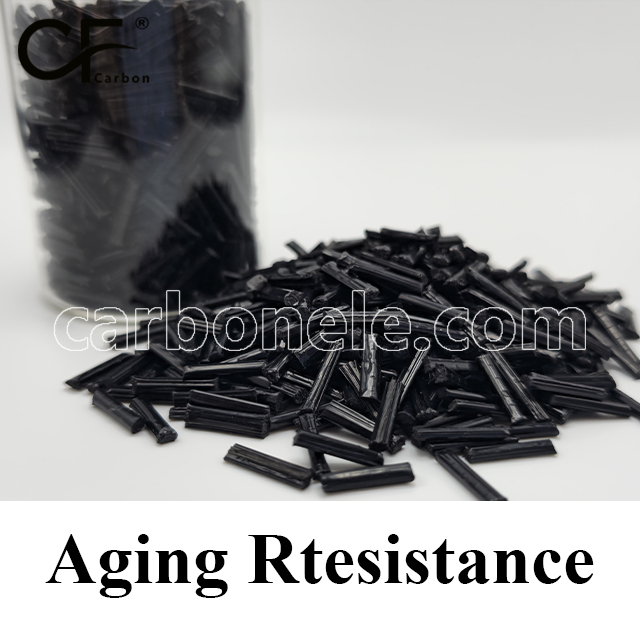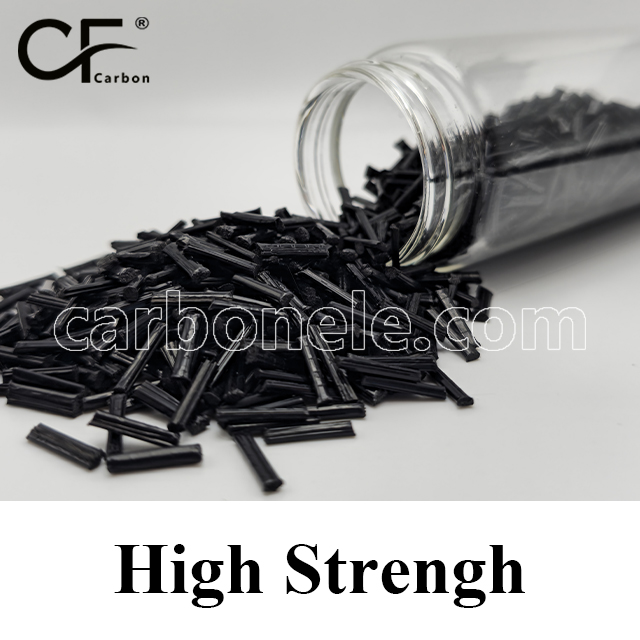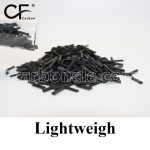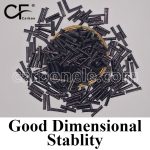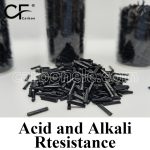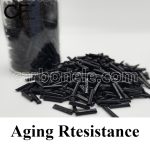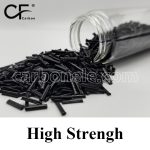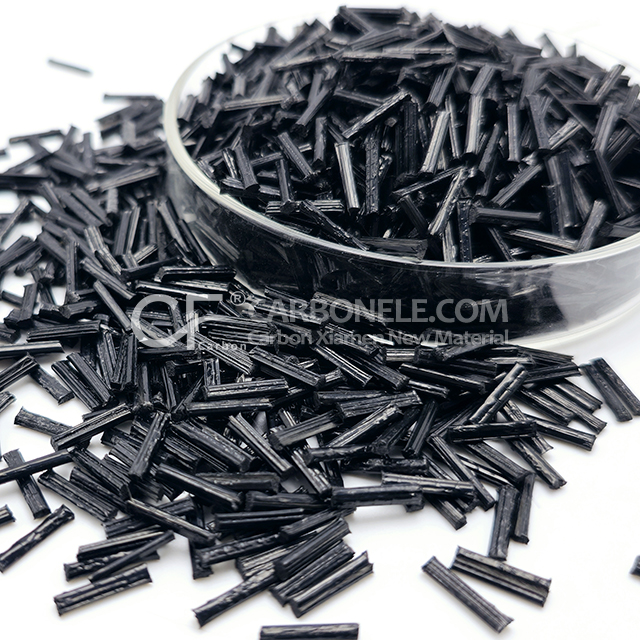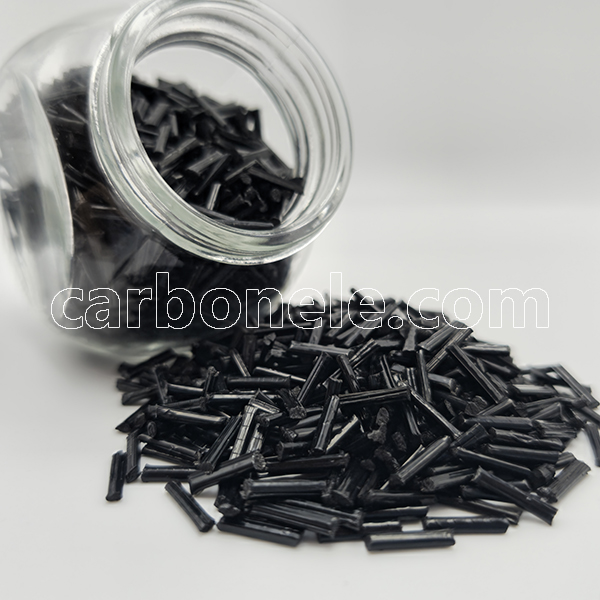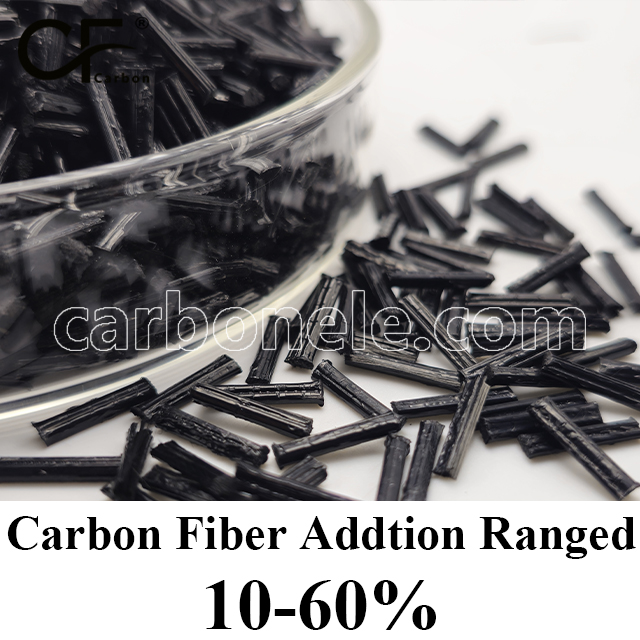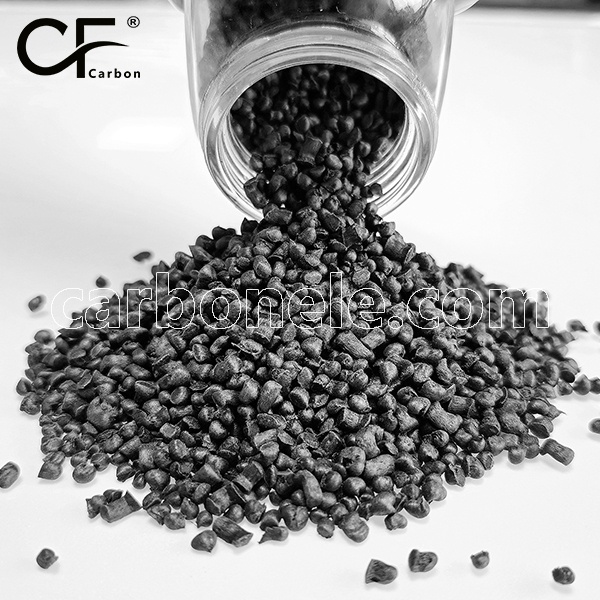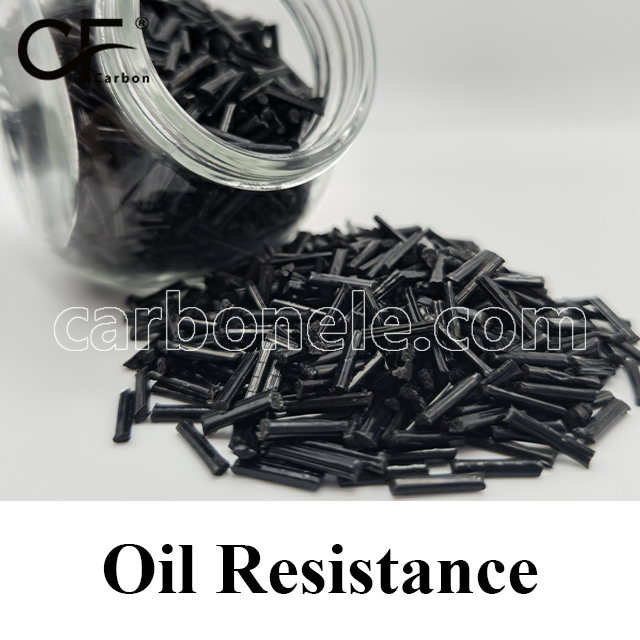
TPU-LCF10 composite materials for aerospace applications
TPU-LCF10 is a flexible yet reinforced thermoplastic elastomer that combines 10% long carbon fiber with TPU, offering enhanced tensile strength, dimensional stability, and fatigue resistance—ideal for semi-structural parts requiring both elasticity and mechanical performance.
- Model number: TPU-LCF-BCA1
- Matrix Resin: Thermoplastic polyurethane (TPU)
- Reinforcing Filler: Carbon fiber
- Appearance: Granules
- Grade: Injection/extrusion grade
- Packaging: 25kgs/bag
TPU-LCF10 | 10% Long Carbon Fiber Reinforced Thermoplastic Polyurethane
TPU-LCF10 is a reinforced thermoplastic elastomer that blends the inherent flexibility and abrasion resistance of TPU with 10% long carbon fiber reinforcement. The use of long carbon fibers provides enhanced tensile strength, dimensional stability, and crack resistance, while preserving a high degree of elasticity—ideal for applications requiring both structural integrity and dynamic flexibility.
Compared to short fiber composites, TPU-LCF10 offers better load transfer and fatigue resistance due to the increased aspect ratio of the fibers. This makes it particularly effective in semi dynamic components where moderate stiffness, vibration damping, and repeated mechanical cycling must be balanced.
TPU-LCF10 is well suited for precision applications in automotive, industrial, and robotic systems where lightweighting, toughness, and long term environmental durability are critical.
Core Performance Highlights
Mechanical Properties
Carbon Fiber Content: 10% (Long Carbon Fiber, uniformly aligned for strength)
Tensile Strength: ≥ 45 MPa
Elongation at Break: ≥ 100%
Shore Hardness: ~95A
→ Improved tensile behavior and crack resistance with superior flexibility for dynamic load environments.
Thermal Resistance
Heat Deflection Temperature (HDT): ~90 °C
Continuous Use Temperature: Up to 80 °C
→ Suitable for mid range thermal conditions and high cycle loading near heat sources.
Environmental & Chemical Durability
Moisture Absorption: Low — maintains mechanical integrity in humid or wet environments
Chemical Resistance: Excellent — resists oils, greases, fuels, and most industrial solvents
→ Designed for long term use in challenging operational settings.
Processing & Manufacturing
Molding Methods: Injection molding, extrusion, and compatible with LCF grade filament extrusion
Surface Finish: Matte with subtle fiber visibility depending on flow orientation
Tooling Considerations: Standard mold steel acceptable; optimized runner design recommended to protect fiber length
→ TPU-LCF10 offers process friendly manufacturing while enhancing strength and toughness.
Target Applications
Automotive & Mobility Systems
Flexible enclosures, dynamic cable brackets, vibration isolated mounts
→ Ideal for semi flexible components with exposure to movement, temperature changes, and chemical splash.
Industrial Machinery
Gaskets, flex couplings, moderate load isolators
→ Delivers longer life and more resilience than non reinforced TPU in repetitive motion applications.
Robotics & Automation
Connector bushings, energy return structures, actuator interfacing components
→ Supports moderate structural loads with high fatigue resistance in flexible robot systems.
Wearables & Equipment Protection
Impact absorbing inserts, lightweight structural supports
→ Lightweight, resilient materials for gear that must balance toughness and comfort.
Performance Summary Table
| Property | Value / Description |
|---|---|
| Carbon Fiber Content | 10% (Long Carbon Fiber) |
| Tensile Strength | ≥ 45 MPa |
| Elongation at Break | ≥ 100% |
| Shore Hardness | ~95A |
| Heat Deflection Temp. | ~90 °C |
| Long Term Service Temp. | Up to 80 °C |
| Water Absorption | Low — stable under humid or wet conditions |
| Chemical Resistance | Excellent — resists common fuels, greases, and solvents |
| Wear Resistance | High — for flexible, high cycle applications |
| Processing Methods | Injection molding, extrusion, LCF compatible 3D printing |
| Surface Finish | Matte with light carbon texture depending on orientation |
| Dimensional Stability | Enhanced — suitable for semi structural elastomeric parts |
Friction coefficient of PA12-LCF
The friction coefficient of TPU is typically between 0.3 and 0.5, while TPU-CF, with added carbon fiber, lowers the friction coefficient to between 0.2 and 0.4. The smaller the value, the better the wear resistance. Therefore, TPU-CF generally offers better wear resistance than pure TPU, especially under high-load conditions.
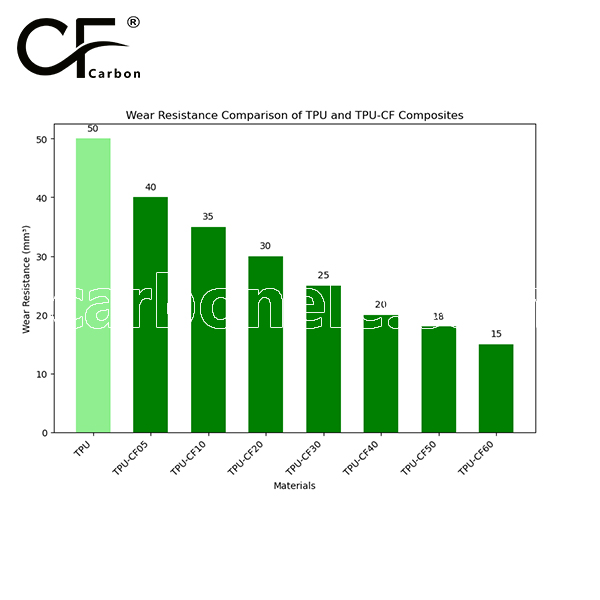
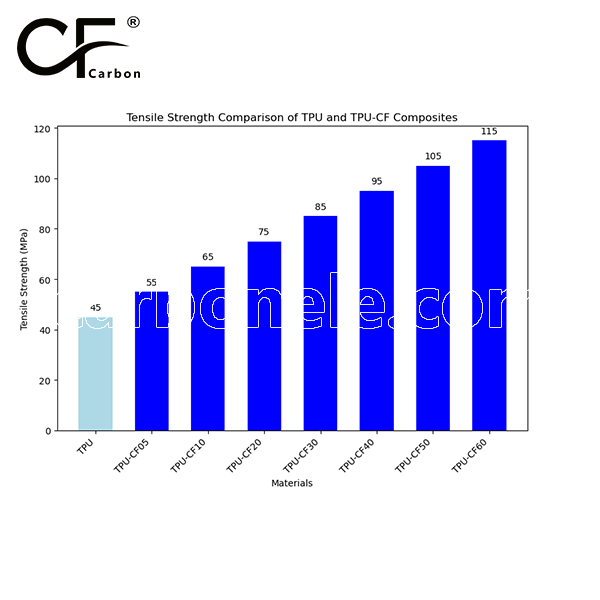

Frequently Asked Questions
Carbon (Xiamen) New Material Co., Ltd. aims to provide buyers with "one-stop" worry-free high-quality services. Here you can find all information about carbon fiber engineering plastics. If you still have questions, please send us an email for consultation!
-
How can I contact the manufacturer of a product that interests me?
When you find a product you are interested in, you can contact the manufacturer directly by sending an email and we will get back to you as soon as possible.
-
How do I find the products that interest me?
All you need to do is enter the keyword, product name in the search window and press the Enter key on your keyboard. Your search results page will then be displayed. You can also search within the product category pages on the home page. Each category is divided into subcategories, allowing you to refine your search and find products that interest you.
-
Where will I find a buying guide?
Please contact our after-sales service directly and we will provide you with a comprehensive operating guide.
-
What are CF Reinforced Thermoplastic Composites?
CF Reinforced Thermoplastic Composites are materials where carbon fibers are incorporated into a thermoplastic matrix. They combine the strength and stiffness of carbon fibers with the processability and recyclability of thermoplastics. For instance, they are used in automotive parts like bumper beams.
-
What are the benefits of CF Reinforced Thermoplastic Composites over traditional composites?
The key benefits include faster production cycles, easier recyclability, and better impact resistance. They also offer design flexibility. An example is in the manufacturing of consumer electronics casings where complex shapes can be achieved more easily.
-
How are CF Reinforced Thermoplastic Composites processed?
Common processing methods include injection molding, extrusion, and compression molding. Injection molding is widely used for mass production. For example, in the production of small components for the medical industry.
-
What industries use CF Reinforced Thermoplastic Composites?
They are utilized in aerospace, automotive, medical, and sports equipment industries. In aerospace, they can be found in interior components. In the medical field, they might be used in prosthetics.
-
How does the carbon fiber content affect the properties of the composites?
Higher carbon fiber content generally leads to increased strength and stiffness but may reduce ductility. A moderate content is often balanced for specific applications. For example, a higher content might be preferred in structural parts of a race car.
-
What are the challenges in using CF Reinforced Thermoplastic Composites?
Challenges include higher material costs, complex processing equipment requirements, and ensuring uniform fiber dispersion. Issues with adhesion between the fibers and the matrix can also arise. An example is in achieving consistent quality in large-scale production.







